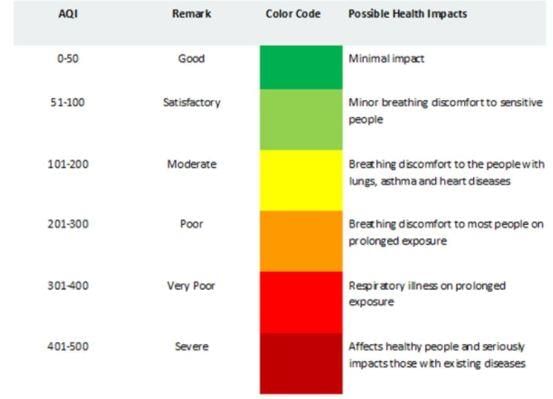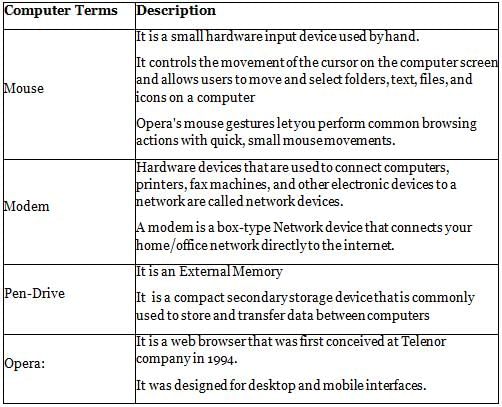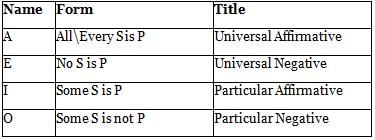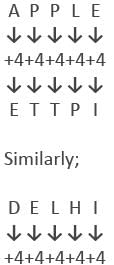Kerala SET Paper 1 Mock Test - 1 - KTET MCQ
30 Questions MCQ Test Kerala SET Mock Test Series 2025 - Kerala SET Paper 1 Mock Test - 1
Which of the following statements about the Treaty of 1719 between the Marathas and the Mughals are true?
I. According to it, Shahu was recognised as the king of his “Swarajya” by the Mughals.
II. It was signed by Balaji Vishwanath with Husain Ali, the elder of the Sayyid brothers.
III. Shahu was permitted to collect the Chauth and Sardeshmukhi of the six Mughal provinces of the Deccan.
IV. The Marathas were, in turn, asked to maintain a contingent of 15,000 horsemen for the service of the Mughals.
V. Shahu’s mother as well as the other member of his family were released by the Mughals.
Directions: Read the following passage carefully and answer the question.
The Taj Mahal has become one of the world’s best known monuments. This domed white marble structure is situated on a high plinth at the southern end of a four-quartered garden, evoking the gardens of paradise, enclosed within walls measuring 305 metres by 549 metres. Outside the walls, in an area known as Mumtazabad, were living quarters for attendants, markets, sarais and other structures built by local merchants and nobles. The tomb complex and the other imperial structures of Mumtazabad were maintained by the income of thirty villages given specifically for the tomb’s support. The name Taj Mahal is unknown in Mughal chronicles, but it is used by contemporary Europeans in India, suggesting that this was the tomb’s popular name. In contemporary texts, it is generally called simply the Illuminated Tomb (Rauza-i-Munavvara).
Mumtaz Mahal died shortly after delivering her fourteenth child in 1631. The Mughal court was then residing in Burhanpur. Her remains were temporarily buried by the grief-stricken emperor in a spacious garden known as Zainabad on the bank of the river Tapti. Six months later, her body was transported to Agra, where it was interred in land chosen for the mausoleum. This land, situated south of the Mughal city on the bank of the Jamuna, had belonged to the Kachhwaha rajas since the time of Raja Man Singh and was purchased from the then current raja, Jai Singh. Although contemporary chronicles indicate Jai Singh’s willing cooperation in this exchange, extant farmans (imperial commands) indicate that the final price was not settled until almost two years after the mausoleum’s commencement. Jai Singh’s further cooperation was insured by imperial orders issued between 1632 and 1637 demanding that he provide stone masons and carts to transport marble from the mines at Makrana, within his “ancestral domain”, to Agra where both the Taj Mahal and Shah Jahan’s additions to the Agra fort were constructed concurrently.
Work on the mausoleum was commenced early in 1632. Inscriptional evidence indicates much of the tomb was completed by 1636. By 1643, when Shah Jahan most lavishly celebrated the ‘Urs ceremony for Mumtaz Mahal’, the entire complex was virtually complete.
Q. The popular name Taj Mahal was given by
The Taj Mahal has become one of the world’s best known monuments. This domed white marble structure is situated on a high plinth at the southern end of a four-quartered garden, evoking the gardens of paradise, enclosed within walls measuring 305 metres by 549 metres. Outside the walls, in an area known as Mumtazabad, were living quarters for attendants, markets, sarais and other structures built by local merchants and nobles. The tomb complex and the other imperial structures of Mumtazabad were maintained by the income of thirty villages given specifically for the tomb’s support. The name Taj Mahal is unknown in Mughal chronicles, but it is used by contemporary Europeans in India, suggesting that this was the tomb’s popular name. In contemporary texts, it is generally called simply the Illuminated Tomb (Rauza-i-Munavvara).
Mumtaz Mahal died shortly after delivering her fourteenth child in 1631. The Mughal court was then residing in Burhanpur. Her remains were temporarily buried by the grief-stricken emperor in a spacious garden known as Zainabad on the bank of the river Tapti. Six months later, her body was transported to Agra, where it was interred in land chosen for the mausoleum. This land, situated south of the Mughal city on the bank of the Jamuna, had belonged to the Kachhwaha rajas since the time of Raja Man Singh and was purchased from the then current raja, Jai Singh. Although contemporary chronicles indicate Jai Singh’s willing cooperation in this exchange, extant farmans (imperial commands) indicate that the final price was not settled until almost two years after the mausoleum’s commencement. Jai Singh’s further cooperation was insured by imperial orders issued between 1632 and 1637 demanding that he provide stone masons and carts to transport marble from the mines at Makrana, within his “ancestral domain”, to Agra where both the Taj Mahal and Shah Jahan’s additions to the Agra fort were constructed concurrently.
Work on the mausoleum was commenced early in 1632. Inscriptional evidence indicates much of the tomb was completed by 1636. By 1643, when Shah Jahan most lavishly celebrated the ‘Urs ceremony for Mumtaz Mahal’, the entire complex was virtually complete.
The economy is classified into public and private sectors on the basis of :
Shivaji sacked Surat again in 1670. After this he also raided the Mughal provinces of Berar, Baglana and Khandesh. What factor helped Shivaji?
Mrs Laghate efficiently evaluates her students, both individually and in groups, at the same time. The assessment tool she uses is
Which country is the host of ‘Asia-Pacific Leaders’ Conclave on Malaria Elimination’?
Directions: Read the following passage carefully and answer the given question.
James adison said, "People who mean to be their own governors must arm themselves with power that knowledge gives." In India, the Official Secrets Act, 1923 was a convenient smokescreen to deny members of the public access to information. Public functioning has traditionally been shrouded in secrecy. But in a democracy in which people govern themselves, it is necessary to have more openness. In the maturing of our democracy, right to information is a major step forward; it enables citizens to participate fully in the decision-making process that affects their lives so profoundly. It is in this context that the address of the Prime Minister in the Lok Sabha is significant. He said, "I would only like to see that everyone, particularly our civil servants, should see the Bill in a positive spirit; not as a draconian law for paralysing Government, but as an instrument for improving Government-Citizen interface resulting in a friendly, caring and effective Government functioning for the good of our People." He further said, "This is an innovative Bill, where there will be scope to review its functioning as we gain experience. Therefore, this is a piece of legislation, whose working will be kept under constant reviews."
The Commission, in its Report, has dealt with the application of the Right to Information in Executive, Legislature and Judiciary. The Judiciary could be a pioneer in implementing the Act in letter and spirit because much of the work that the Judiciary does is open to public scrutiny. Government of India has sanctioned an e-governance project in the Judiciary for about Rs. 700 crore which would bring about systematic classification, standardisation and categorisation of records. This would help the Judiciary to fulfil its mandate under the Act. Similar capacity building would be required in all other public authorities. The transformation from non-transparency to transparency and public accountability is the responsibility of all three organs of the State.
Q. Right to Information is a major step forward to
Which of the following is incorrect about Aurangzeb?
The essential quality/qualities of a researcher is/are
Match List I with List II

Choose the correct answer from the options given below:
In which of the following Ancient Indian universities, the culture and civilization of Tibet was built mainly through the writings of the scholars?
Manuel Castelle was the first to use which of the following terms?
In India’s federal system, the state governments have the power to legislate on all those subjects which are included in the:
Directions: Read the following passage carefully and answer the question.
The popular view of towns and cities in developing countries and of urbanisation process is that despite the benefits and comforts it brings, the emergence of such cities connotes environmental degradation, generation of slums and squatters, urban poverty, unemployment, crimes, lawlessness, traffic chaos etc. But what is the reality? Given the unprecedented increase in urban population over the last 50 years from 300 million in 1950 to 2 billion in 2000 in developing countries, the wonder really is how well the world has coped, and not how badly.
In general, the urban quality of life has improved in terms of availability of water and sanitation, power, health and education, communication and transport. By way of illustration, a large number of urban residents have been provided with improved water in urban areas in Asia’s largest countries such as China, India, Indonesia and Philippines. Despite that, the access to improved water in terms of percentage of total urban population seems to have declined during the last decade of 20th century, though in absolute numbers, millions of additional urbanites have been provided improved services. These countries have made significant progress in the provision of sanitation services too, together, providing for an additional population of more than 293 million citizens within a decade (1990-2000). These improvements must be viewed against the backdrop of rapidly increasing urban population, fiscal crunch and strained human resources and efficient and quality-oriented public management.
Q. Which of the following statements cannot be inferred from the given passage?
During the Delhi Sultanate, the designation 'Muqaddam or Chaudhari' was used for
Which of the following is/are classified in the category of the developmental research?
Learning disabilities can interfere with learning basic skills such as reading, writing and/or math. These can arise due to all listed reasons except:
For a spherical mirror focal length ‘f ’ and radius of curvature ‘R' are correlated as :
Match List I with List II.
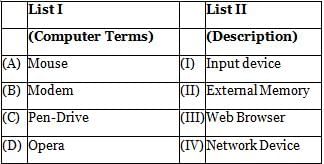
Choose the correct answer from the options given below:
Which of the following is not a source of pollution in soil?
While dusting a carpet we beat it with a stick because:
Directions: Study the given information and answer the following question.
The line graph shows the incentive points earned by four salespersons in different months of 2017.
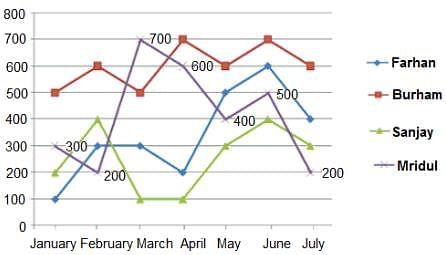
Q. Which salesperson(s) earned the second-highest points during the given period?
Match List I with List II:
Consider the following in the context of the Square of Opposition of Propositions:

Choose the correct answer from the options given below:
Directions: Study the following question carefully and choose the right answer.
In a certain coding system, APPLE stands for ETTPI. What is the code for "DELHI"?
A classroom having ______, clearly shows that the classroom studies are lively.



